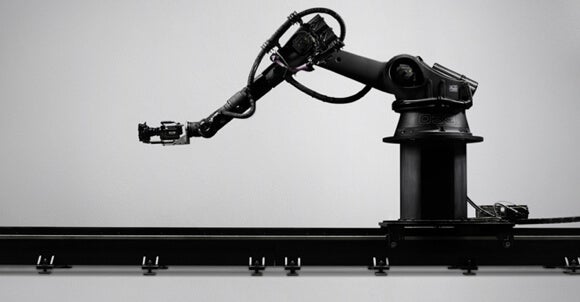
Perhaps in hindsight we all should have seen Google’s turn to robotics coming when, under Andy Rubin, the company dubbed its mobile operating system Android. With Rubin now in charge of Google’s still mostly secret robotics division, the software engineer’s trajectory seems to be the key to what the company is up to in robotics.
While details are still scant and Google declined to comment for this article, an executive from the Chinese electronics manufacturer Foxconn spoke out of turn recently to the Wall Street Journal, telling the paper that Foxconn will partner with Google to try out some industrial robots made by the tech giant.
After acquiring seven robotics companies, several of which focus on industrial machines, it’s no surprise that Google is preparing to try out a few new toys. And it makes sense that it would seek to do so away from prying eyes in Silicon Valley.

Foxconn, with notorious labor problems, has also long looked to replace its disgruntled human employees with robots.
Industrial robots, particularly those that run shipping warehouses, could also help Google’s Shopping Express service compete with Amazon to become the department store to the world, according to the Wall Street Journal report and Forrester Research robotics analyst Anthony Mullen.
But Google’s long-term goal appears to be android-style robots, like those built by its eighth robotics acquisition of 2013, Boston Dynamics. And it aims to run them on an operating system it will build itself, according to the Journal report.
The operating system is the thing, as Android has shown by spurring third-party development of compatible devices and technologies.
“Robots, like smartphones, are platforms for products and services. Data-obsessed organizations like Google need to ensure that they aren’t dis-intermediated in the ‘last mile’ to the user, and that means getting involved in the physical world with hardware,” wrote analyst Mullen in December.

“Google is steadily moving from their position in the ether with search algorithms towards a more connected physical world — from their smartphones and Android operating system to their work on Android@Home. The robotics play here is essentially on the same trajectory – control and influence in the ‘last mile,’” Mullen wrote.
But while Android was the first open-source operating system for mobile devices, there is already at least one popular open-source platform for robotics, ROS.
Google’s plans for its hardware syncs up neatly with robotics trends. The technology can already handle the controlled and repetitive behaviors needed in an industrial setting, but the movements and complexity of real world situations remain beyond most robots’ ability to navigate successfully.
Google doesn’t have a lot of experience with movement, but it has very deep pockets when it comes to the artificial intelligence that drives robotic decision-making.
Images: Bot and Dolly, Techweb, Joi via Flickr


